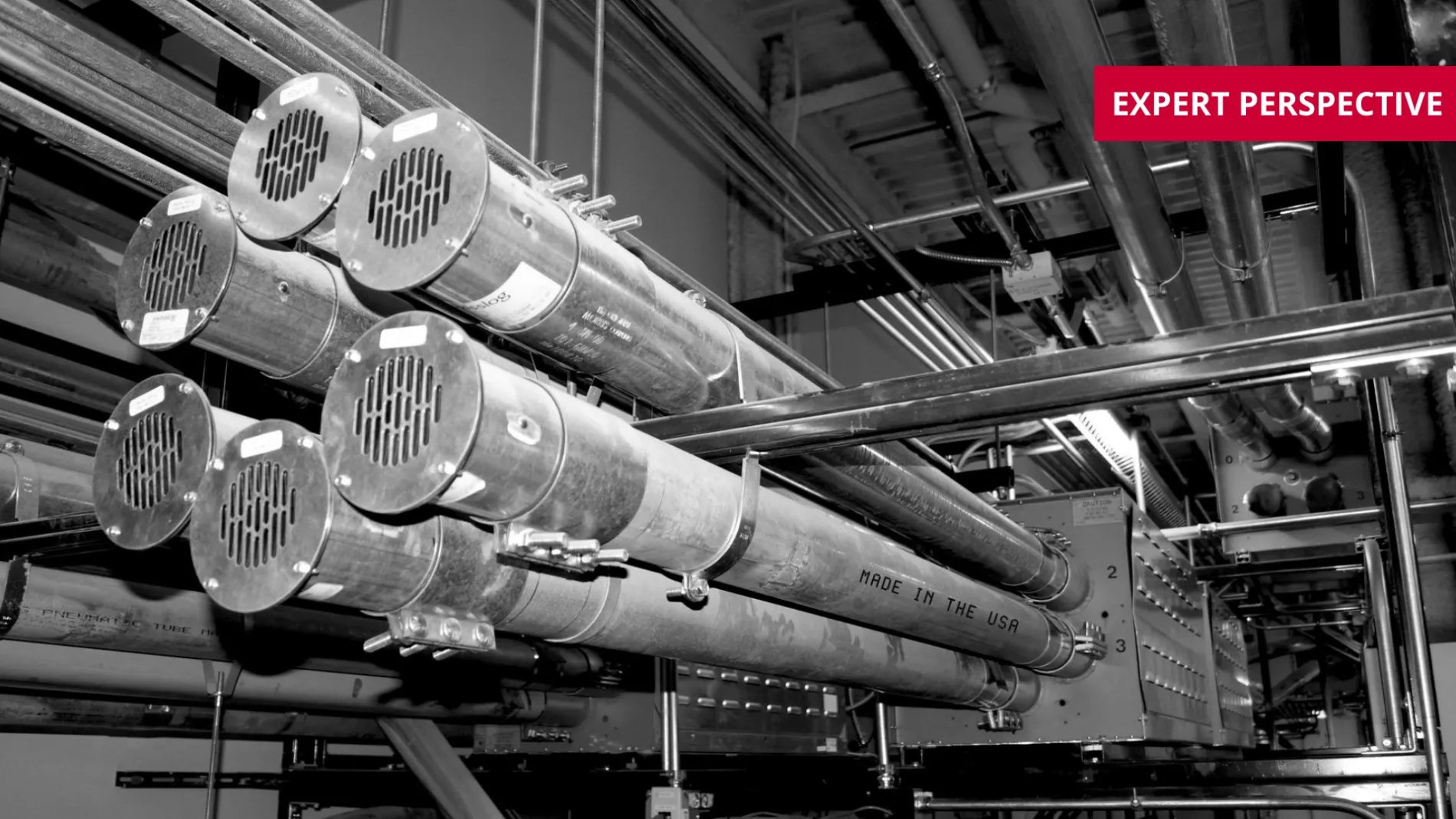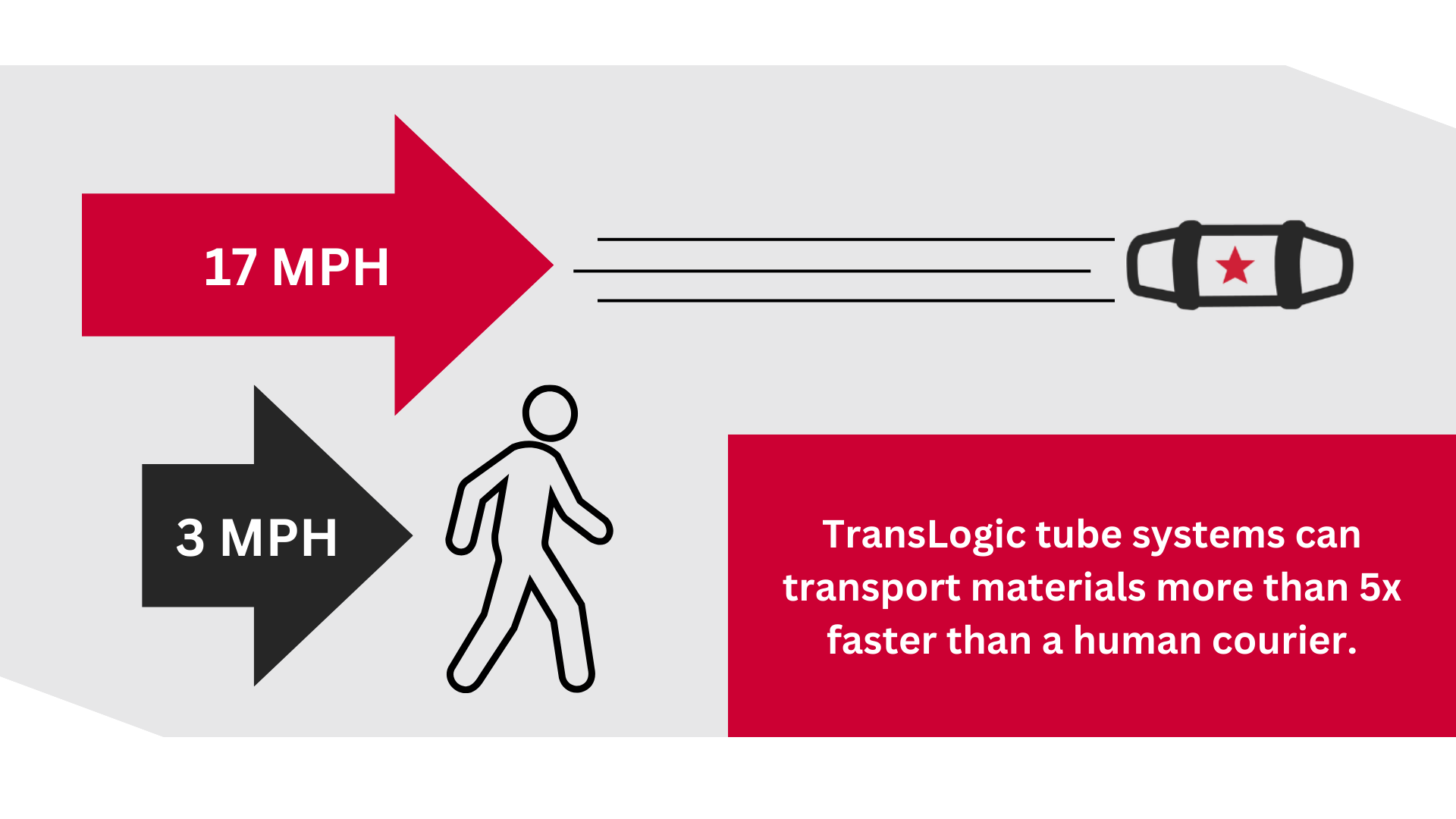You might also be interested in this


Speed Can Make All The Difference in Patient Care
Reading Time: 2 min.
10/5/2023
Aaron Plachta and Amanda Costanzi
In a hospital "fast" can impact a patient’s care dramatically, especially for those in critical care departments like the Emergency Department, the Operating Room, the ICU, and Cardiac Care Units. Time is generally not a luxury for these hospital units, nor for the patients being cared for in these areas. Speed may be important in many industries, but when it comes to healthcare, speed is one of the most crucial components for clinical patient care.
So how do we define fast inside the walls of the hospital? It could be how fast blood test results appear in a patient’s medical records. It could be how fast a radiologist is able to read a set of x-rays. It could be how fast a registered nurse (RN) is able to administer an IV bag. Or, in the case of a pneumatic tube system, it could be how fast critical items are transported from one hospital unit to another.
To put this in context, let’s compare the speed of human transport versus transport automation through a pneumatic tube system. The average human walks 3-4 miles per hour (MPH) according to Medical News Today. While each health system chooses to have its tube system set to meet its unique needs, the average TransLogic tube system is configured to transport items at 17 MPH. This means that hospitals with our tube systems running inside their walls are moving critical items more than five times faster than those who are reliant on the average human pace.

When considering the size of major hospital campuses - the multiple departments, floors, buildings, and miles that items have to travel in order to reach their intended destination – speed can play a really big role in patient care.
For example, as one of the top ten largest hospitals in Michigan, Detroit Medical Center (DMC) has more than 2,000 licensed beds and 3,000 affiliated physicians. It is nationally ranked in 13 adult specialties and nine pediatric specialties. This many patients, physicians, and specialty areas are spread across six city blocks, four hospitals and 11 buildings which are connected by 6,000 feet of pneumatic tubing, the shortest connection of building-to-building the tubing is 900 feet long.
Imagine a healthcare professional having to pass through multiple floors, elevators, and departments just to hand-over one set of bloodwork, an IV bag, or a set of paperwork. Like most hospitals, the distance between critical areas is less than convenient at DMC.
A walking person would take a minimum of five minutes to travel 900 feet (barring no wait times at elevators, etc.) versus one short minute for a carrier in the tube system to reach the same destination. This is four minutes faster, in other words, the tube system is 80%+ faster than a person walking the same distance. A lot can happen with a patient’s care during these 240 seconds of time.
Our definition of fast-within-the-walls-of-the-hospital starts with a TransLogic tube system.

Contact our knowledgeable specialists to discover how our range of automation solutions can boost efficiency, reduce costs and enhance care at your healthcare facility.
Contact us